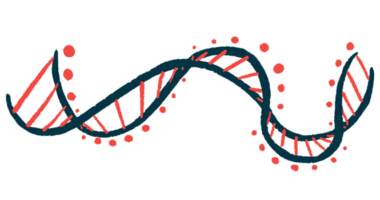Epigenetic Changes to DNA May Be Linked to PWS Symptoms

Specific epigenetic modifications — chemical marks added to DNA that affect the way genes work — are found in people with Prader–Willi syndrome (PWS), and may affect how the disease manifests, a small study reported.
These findings may help in understanding how genes contribute to the disease and open a way to new treatment approaches, the scientists suggested.
The study, “Patients with PWS and related syndromes display differentially methylated regions involved in neurodevelopmental and nutritional trajectory,” was published in the journal Clinical Epigenetics by a team of researchers based in France.
PWS is caused by the loss of or defects in genes from a particular region of chromosome 15 known as the PWS locus, which control sleep, metabolism, appetite, growth, intellectual skills, and social behavior.
Genomic imprinting — a natural process in which the body silences, or turns off, either of the two copies of a gene by means of epigenetic modifications — is key in the development of PWS. This is because genomic imprinting normally silences the PWS locus coming from the mother. As such, if the paternal gene copy is not present or functioning as it should, the person will have the disease.
One example of an epigenetic modification is methylation, which involves the addition of a methyl group to DNA. This type of modification can define how the information in genes is used by cells without affecting the genetic code itself.
Thinking that DNA methylation signatures — or patterns — may dictate how the disease manifests, the researchers looked at the epigenetic modifications in PWS patients and those with PWS-related disorders caused by inactivation of two PWS locus genes, SNORD116 and MAGEL2.
For the study, funded by the French Association for Prader–Willi Syndrome, the scientists collected blood samples from seven people with PWS. Five had deletions of the PWS locus, one had a microdeletion in SNORD116, and another had a frameshift mutation in MAGEL2 and presented with Schaaf–Yang syndrome, a genetic disorder with common features to PWS. Notably, a frameshift mutation is caused by a deletion or insertion in a DNA sequence that changes the way the sequence is read.
Among the PWS patients, two were 1-year-olds, one was a 10-year-old child, and four were adults, ages 21 to 32. Two were female (including the SNORD116 microdeletion patient) and five were male (including the MAGEL2 frameshift mutation patient).
As controls, the researchers used DNA samples from two 1-year-old infants (one male and one female) who were suspected of having a genetic disease that could not be confirmed by genetic testing and clinical follow-up.
Using a method that involves scanning the whole genome to look for epigenetic modifications, the researchers found a total of 5,308 differentially methylated regions (DMRs) — or regions with a different methylation status across multiple samples — in these seven people. These DMRs were matched to 2,280 genes.
“The DMRs in patients with PWS were associated with neurodevelopmental pathways, endocrine dysfunction and social and addictive processes consistent with the key features of the PWS phenotype [clinical presentation],” the investigators wrote.
Next, they took a closer look at the DMRs in the two patients with either a tiny deletion in SNORD116 or a frameshift mutation in MAGEL2. By comparing with a control patient, they found that the DMRs linked to the SNORD116 tiny deletion in a young woman occurred in genes involved in metabolism and nervous system development. As for the young man with a change in MAGEL2, the DMRs occurred in genes involved in the production of large molecules in the body, among other processes.
“Our preliminary results showed that the DMRs we described may be related to the complex phenotype of PWS,” the researchers concluded.
“A question of utmost importance arises from these results concerning whether it would be possible to modify the methylation status caused by a lack of expression of SNORD116, MAGEL2 and perhaps other genes in the PWS region with, for example, oxytocin treatment or other drugs and/or social disability rehabilitation,” they added.
An investigative treatment called LV-101 (intranasal carbetocin), which mimics the hormone oxytocin, is under U.S. Food and Drug Administration review for possible approval, with a decision expected by year’s end.
Among this study’s limitations, its investigators said, is the small number of patients and controls, and its reliance on blood samples — whereas epigenetic modifications may be specific to certain tissues or even cells.







